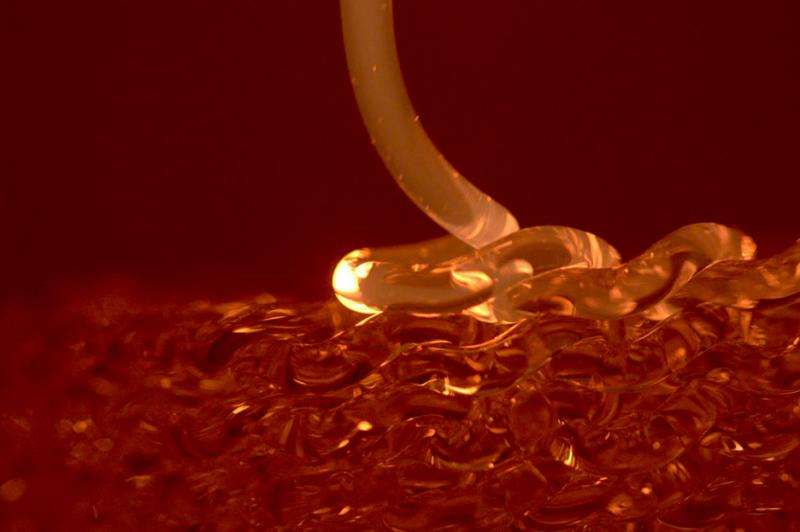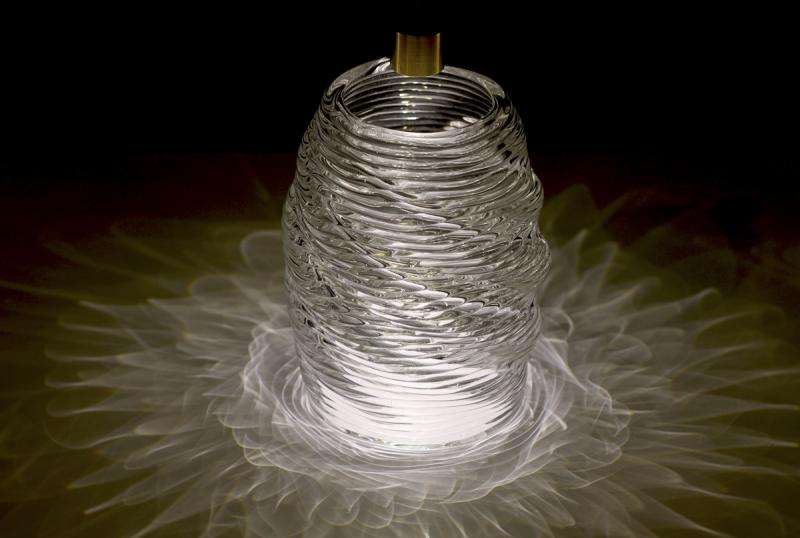August 22, 2015 weblog
MIT team explores glass via additive manufacturing (w/ Video)

Fine glass manufactured additively has been the focus of a team of MIT researchers, who demonstrate their new method of making glass via advanced 3D printing.
A report in The Economist states that their turn to additive manufacturing can result in objects of rare beauty and possibly of great utility.
The Mediated Matter Group at MIT teamed with MIT's Department of Mechanical Engineering, Wyss Institute and MIT's Glass Lab to develop their process of glass 3D printing. Their video shows additive manufacturing of "optically transparent glass. The Mediated Matter group focuses on biologically inspired design fabrication tools and technologies. The results in the video indicate showmanship in how one can work up new forms of designs and novel processes; they perform at an intersection of computer science, material engineering and design.
The Mediated Matter Group pointed out that traditionally made glass can be molded, formed, blown, plated or sintered and its formal qualities are closely tied to techniques that were used to make it.
"From the discovery of core-forming process for bead-making in ancient Egypt, through the invention of the metal blow pipe during Roman times, to the modern industrial Pilkington process for making large-scale flat glass; each new breakthrough in glass technology occurred as a result of prolonged experimentation and ingenuity," said the group.
Limits have hardly been reached; there is "a new universe of possibilities for uses of the material." They explained what it means by an "optically transparent glass printing process," in their "G3DP" project.
"G3DP is an additive manufacturing platform designed to print optically transparent glass," and it is based on a dual heated chamber concept. The upper chamber acts as a Kiln Cartridge and the lower chamber serves to anneal the structures.

The Kiln Cartridge operates at approximately 1900°F and can contain enough material to build a single architectural component. The molten material is funneled through an alumina-zircon-silica nozzle.
The team said that a selection of Glass pieces will appear in an exhibition at Cooper Hewitt, Smithsonian Design Museum next year.
The full text version of "Additive Manufacturing of Optically Transparent Glass" will appear in the September 2015 issue (Vol. 2, Issue 3) of 3D Printing and Additive Manufacturing.
Brian Krassenstein in 3D Print.com further explained their process:
"The way the machine works is actually quite simple. The top of the printer is basically a small kiln, which the user is able to place glass into. The kiln fires up and reaching a temperature of approximately 1900°F is easily able to melt the glass placed within. The lower section of the printer is made up of an alumina-zircon-silica nozzle, which has a similar function to that of a typical hotend on a desktop FDM 3D printer. Molten glass is then funneled down from the kiln and through the nozzle as it's extruded onto a build platform to slowly cool and harden. When they want the glass flow and printing to stop, all they have to do is lower the temperature of the nozzle by using compressed air."
The team used 80/20 aluminum stock and square steel tube for the frame of the printer. Krassenstein said they also used three independent stepper motors and lead screw gantry system and drivers controlled via an Arduino and RAMPS 1.4 Arduino shield.
More information: matter.media.mit.edu/environments/details/610
© 2015 Tech Xplore



















